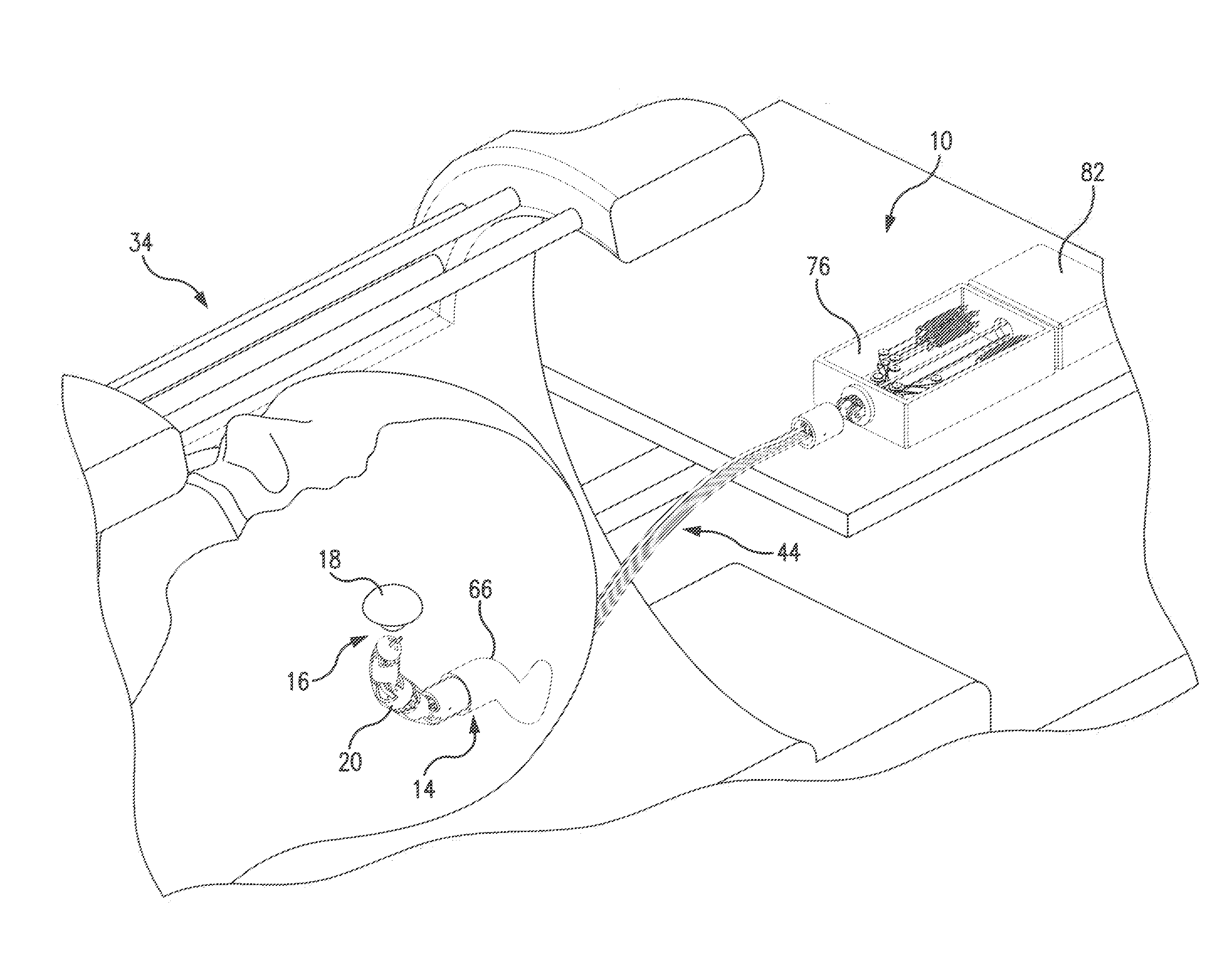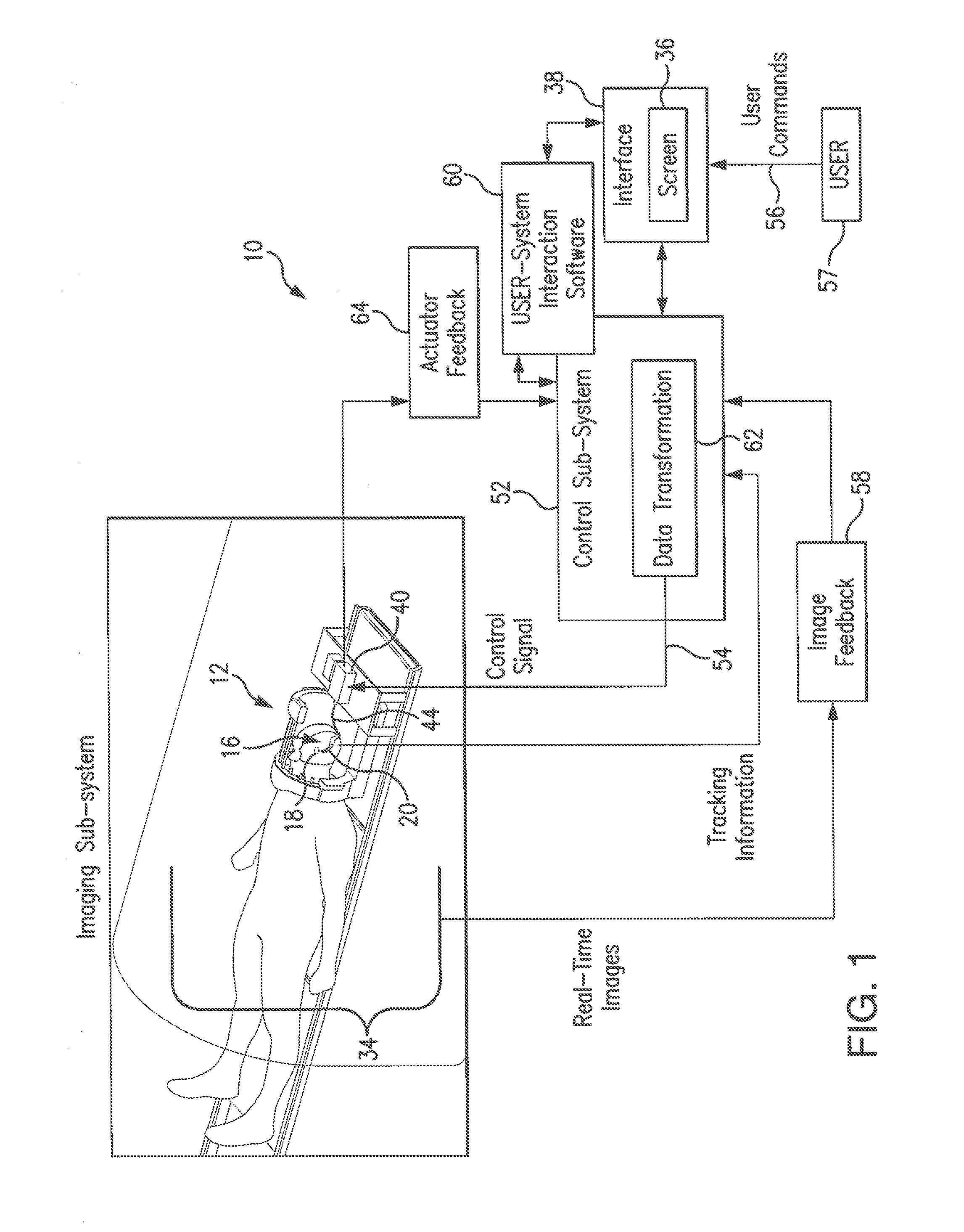Minimally invasive neurosurgical intracranial robot system and method
a robot system and neurosurgical technology, applied in the field of minimally invasive neurosurgical procedures, can solve the problems of high mortality rate, lack of satisfactory continuous imaging modality for intraoperative intracranial procedures, and extremely difficult to remove brain tumors precisely and completely without damaging the surrounding brain tissue using traditional surgical tools, and achieve high efficiency and precise manner.
- Summary
- Abstract
- Description
- Claims
- Application Information
AI Technical Summary
Benefits of technology
Problems solved by technology
Method used
Image
Examples
Embodiment Construction
[0116]Referring to FIG. 1, a minimally invasive neurosurgical intracranial robot (also referred to herein as MINIR) system 10 includes a robot sub-system 12, which during the surgery is introduced through a narrow surgical corridor to an operative site 16 containing a tumor 18.
[0117]The present system will enable the neurosurgeon to remove deep brain intracranial tumors, both neoplastic and non-neoplastic masses, such as blood clots, that are typically hard to reach through a minimally invasive approach, since deep brain tumors are typically located away from the “line-of-sight” of the neurosurgeon. The present system provides the neurosurgeon with means to remove the tumor by teleoperatively navigating the position of the minimally invasive neurosurgical intracranial robot (MINIR) having a number of DOFs (Degrees-of-Freedom) towards the tumor site based on real-time images of the operational site aligned with visual tracking data of the robot, as will be presented in detail in furt...
PUM
 Login to View More
Login to View More Abstract
Description
Claims
Application Information
 Login to View More
Login to View More - R&D
- Intellectual Property
- Life Sciences
- Materials
- Tech Scout
- Unparalleled Data Quality
- Higher Quality Content
- 60% Fewer Hallucinations
Browse by: Latest US Patents, China's latest patents, Technical Efficacy Thesaurus, Application Domain, Technology Topic, Popular Technical Reports.
© 2025 PatSnap. All rights reserved.Legal|Privacy policy|Modern Slavery Act Transparency Statement|Sitemap|About US| Contact US: help@patsnap.com



